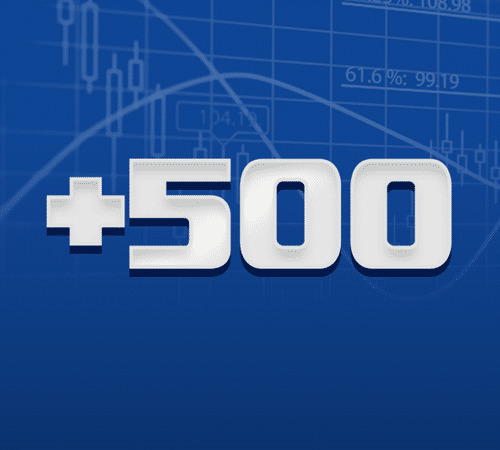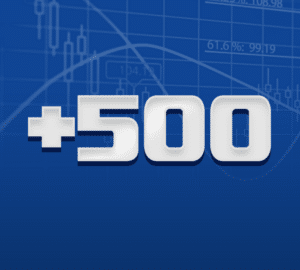
Quick Answer: Is Plus500 Better than Trading 212?
Yes, in our opinion, Plus500 edges ahead of Trading 212. Plus500 offers a more intuitive platform, competitive spreads, and a wider range of tradable assets. Its user-friendly interface and comprehensive educational resources make it a preferable choice for both novice and experienced traders.
Side-by-Side Comparison Chart
Fee Score | 3.9 | 3.8 |
Platform Score | 4.9 | 4.6 |
Account Opening Score | 5 | 4.6 |
EURUSD Spread | 0.8 | 1 |
Withdrawl/ Deposit Fee | No | No |
Minimum Deposit | $100 | $1 |
MT4 Available | No | No |
FCA Regulated | Yes | Yes |
FSCS Protection of £85K to UK Clients | Yes | Yes |
Plus500 - Best Overall
Plus500 is one of the top CFD platforms that allows traders to trade on a wide range of financial instruments. The Plus500 platform is suitable only for experienced traders, and they should consider the risks involved with CFD trading. Beginners could practice trading with Plus500's free demo account. Join Plus500 today and enjoy the benefits of their powerful trading platform and exceptional customer service.
No commissions
Tight spreads
Guaranteed stop-loss orders
$100 minimum deposit
No deposit or withdrawal fees
Massive range of CFD broker assets and financial markets available
Funds Protected Up To £85k By FSCS (UK)
Negative balance protection
80% of retail investor accounts lose money when trading CFDs with this provider. You should consider whether you can afford to take the high risk of losing your money.
What I liked
Starting with the positives, the fee structure at Plus500 was commendable. With a competitive EURUSD spread of just 0.8 and zero fees on both deposits and withdrawals, it’s clear that the company understands the importance of cost-efficiency for traders. The platform’s flexibility in payment methods, including Bank Transfer, PayPal, Wise, and Revolut, made the funding process incredibly smooth and user-friendly.
The Plus500 platform itself was a highlight. Its intuitive design, reflected in a high platform score of 4.9/5, ensured a seamless trading experience. The account opening process was flawless and deserving of its perfect score. As for customer service, I found it to be above average with a score of 4.1/5, ensuring that when I needed support, it was readily available.
From a regulatory standpoint, Plus500’s adherence to FCA regulations and the FSCS protection of £85K for UK clients instilled a sense of security and trust. Knowing that my capital was safeguarded to such an extent allowed me to trade with peace of mind.
What I Didn't Like
However, the platform is not without its shortcomings. The absence of MetaTrader 4 (MT4) and MetaTrader 5 (MT5) platforms, which are the industry standard for advanced traders, was a significant limitation. These platforms offer a level of depth in analysis and customizability that I missed while trading on Plus500. The lack of these options might deter traders who rely on the advanced technical analysis tools and automated trading systems that MT4 and MT5 provide.
Additionally, while the fees score is high, the platform could benefit from more transparency around how they calculate these scores and what they entail, ensuring traders can make the most informed decisions possible.
In conclusion, my experience with Plus500 has been largely positive, marked by user-centric financial structuring and a robust, secure trading environment. Nevertheless, there is room for enhancement, particularly in offering advanced trading platform options like MT4 and MT5, which would cater to the needs of experienced traders looking for a more granular approach to the markets.
Pros
- Competitive Fees: With a fee score of 3.9/5 and a tight EURUSD spread of 0.8, Plus500 offers competitive pricing, which is essential for frequent traders.
- No Withdrawal or Deposit Fees: The lack of fees for deposits and withdrawals makes it easier for traders to manage their funds without incurring additional costs.
- Flexible Deposit Options: The availability of multiple deposit methods, including bank transfer, PayPal, Wise, and Revolut, provides convenience and flexibility.
- Seamless Account Opening: With a perfect score in account opening, the process is streamlined and efficient, which is beneficial for new users.
- Customer Service: A solid customer service score of 4.1/5 implies that support is accessible and helpful when needed.
Cons
- Lack of MetaTrader Platforms:: The absence of MT4 and MT5 might be a disadvantage for traders who rely on these popular platforms for advanced trading tools and automated strategies.
- Inactivity Fee $10 per month
Plus500 offers trading opportunities in over 2800 CFDs, spanning a diverse array of asset categories such as Country and Sector Indices, Forex, Commodities, Single stocks, ETFs, Options.
| Type | Fee |
| Overnight Funding | yes |
| Currency Conversion Fee | 0.7% |
| Guaranteed Stop Order | spread applies |
| Inactivity Fee | $10 per month |
| Withdrawls/Deposits | $0 |
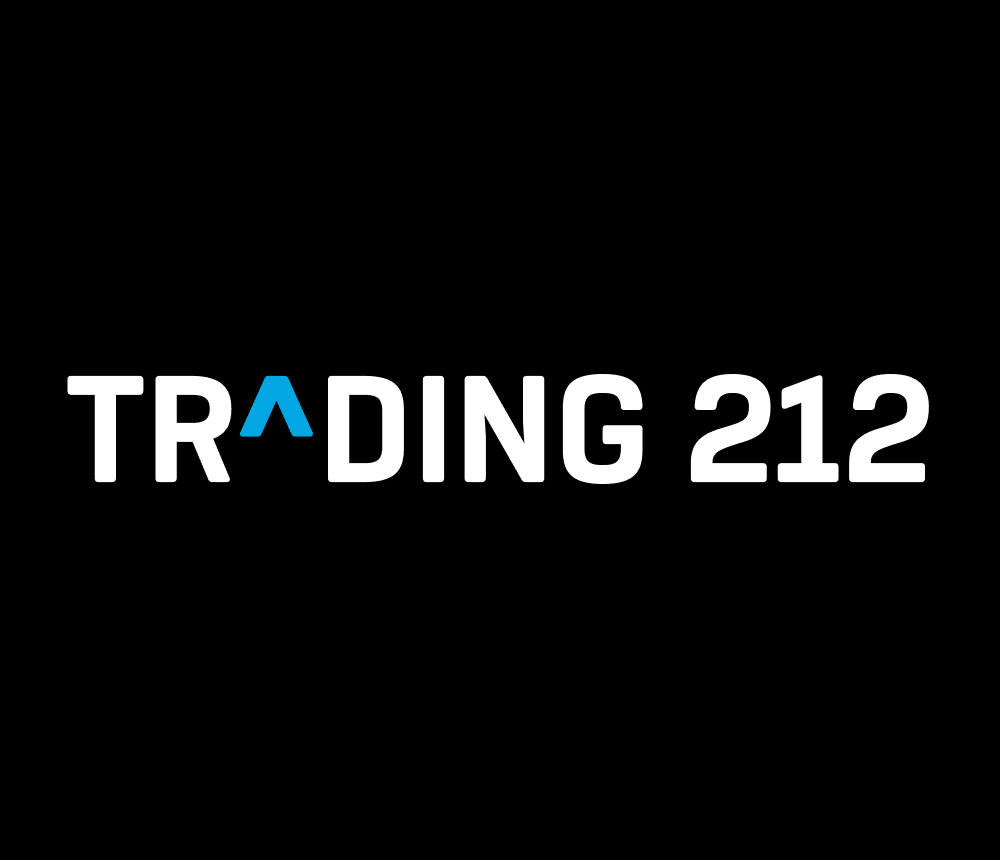
Trading 212 - Best for a low minimum depsoit
We consider Trading 212 to be one of the best CFD Platforms that offers commission-free trading on a wide range of financial instruments, including stocks, ETFs, currencies.
Quick purchasing execution
2 Million Lifetime Funded Accounts
4.6 Trust Pilot Score – Over 21k Reviews
Zero commission
Negative balance protection
Multiple Deposit & Withdrawal Methods inc PayPal
Minimum desposit: $0
Mobile App
24/7 Support
Easy Sign Up
Regulated by the FCA
Funds Protected Up To £85k By FSCS (UK)
79% of retail investor accounts lose money when trading CFDs with this provider. You should consider whether you can afford to take the high risk of losing your money.
What I liked
Trading 212’s approach to fees is quite straightforward, which I appreciate. A flat EURUSD spread of 1 is clear and predictable, allowing me to plan my trading costs with ease. The lack of withdrawal and deposit fees aligns with the industry’s best practices, ensuring that traders can manage their funds without worrying about extra charges. Moreover, the minimal minimum deposit of just $1 is exceptional, making it accessible for those new to trading or with limited capital.
The platform supports a variety of deposit methods, including Bank Transfer, PayPal, Wise, and Revolut, which I found to be incredibly convenient. It allows for a high degree of flexibility in how one can fund their account, suiting various preferences and needs.
Trading 212’s platform impressed me with its user-friendly interface and functionality, deserving of its 4.6/5 score. The account opening process was notably efficient and straightforward, making for a hassle-free start to trading.
Customer service was competent, with a score of 4.0/5. My queries were handled with sufficient knowledge and professionalism, which reinforced my trust in the platform’s support system.
From a regulatory standpoint, Trading 212’s compliance with FCA regulations and the provision of FSCS protection of £85K for UK clients provided a significant layer of security and confidence.
What I Didn't Like
Despite the positives, there are aspects where Trading 212 could improve. The absence of both MT4 and MT5 platforms limits access to the tools and customisation options that these platforms offer. For traders who depend on the advanced functionalities of MetaTrader platforms, this could be a deal-breaker.
The fees score of 3.8/5 suggests there is room for improvement, possibly in the form of reducing other non-spread related costs or offering more competitive spreads.
Additionally, while the customer service is good, achieving a perfect score would require an even more personalised and responsive approach, ensuring that traders feel fully supported at all times.
In conclusion, my experience with Trading 212 has been largely positive, highlighted by its accessibility, straightforward fee structure, and reliable customer service. The platform’s design is modern and inviting, making it an excellent choice for those who prioritize ease of use over advanced trading features. However, for Trading 212 to truly stand out, it could consider incorporating popular trading platforms like MT4 and MT5 and strive for even greater excellence in customer support.
Pros
- Zero Fees on Transactions: No withdrawal or deposit fees enhance the appeal for all levels of traders.
- Very Low Minimum Deposit: The \$1 minimum deposit requirement makes this an exceptionally accessible platform for beginners or those looking to trade with minimal capital.
- Flexible Deposit Options: The availability of multiple deposit methods, including bank transfer, PayPal, Wise, and Revolut, provides convenience and flexibility.
- Efficient Account Opening Process: A perfect account opening score reflects a user-friendly and streamlined process for new clients.
- High Platform Rating With a score of 4.6/5, the platform is evidently user-friendly, offering a good trading experience.
Cons
- No MetaTrader Availability: The absence of popular platforms like MT4 and MT5 may be a significant drawback for traders used to these platforms.
- Customer Service Can Improve: A customer service score of 4.0/5 is good but indicates there's room for improvement in support.
- Moderate Fees Score: The fees score of 3.8/5 suggests there may be hidden costs or the spread could be more competitive.
Trading 212 offers CFD (Contract for Difference) trading across a variety of asset categories. These include FOREX, stocks, commodities, indices, and ETFs. However, it’s important to note that when trading CFDs on these instruments, you’re speculating on their market price movements rather than owning the underlying assets.
| Type | Fee |
| Minimum Deposit | $1 |
| Withdrawal fee | $0 |
| Deposit fee | $0 |
| Inactivity fee | No |
| Account fee | No |
Please bear in mind that trading involves the risk of capital loss. 68% to 84% of retail investor accounts lose money when trading CFDs with the providers below. You should consider whether you can afford to take the high risk of losing your money.
Plus500 vs Trading 212: A Comparative Analysis
In the ever-evolving landscape of online trading platforms, Plus500 and Trading 212 emerge as two of the industry’s heavyweights. Both platforms offer unique advantages and cater to a wide spectrum of investors. This comparative analysis dives deep into the features, user experience, fees, and market offerings of Plus500 and Trading 212 to help investors make an informed decision on which platform best suits their trading needs.
Reliability of Plus500: Can You Trust It?
Plus500, established in 2008, has grown to become one of the leading CFD trading platforms globally, offering an extensive range of instruments including stocks, forex, commodities, ETFs, and options. The platform is known for its user-friendly interface, making it accessible for beginners, yet robust enough for experienced traders. Plus500 operates under the strict supervision of several regulatory bodies, including the UK’s Financial Conduct Authority (FCA), the Cyprus Securities and Exchange Commission (CySEC), and the Australian Securities and Investments Commission (ASIC), ensuring a high level of client fund security and compliance with financial regulations.
The reliability of Plus500 is further underscored by its listing on the London Stock Exchange’s Main Market for Listed Companies, a testament to its financial stability and transparency. Moreover, Plus500 employs advanced security measures, including SSL encryption and two-factor authentication (2FA), to protect user data and funds. However, it’s important for potential users to consider that trading CFDs comes with risks, and Plus500 does not offer investment advice or portfolio management services.
Is Trading 212 Trustworthy?
Trading 212 stands out as a fintech company that democratizes the financial markets with a free, smart, and easy-to-use app, allowing for trading in stocks, ETFs, forex, and commodities. Founded in 2006, Trading 212 has made significant strides in making trading accessible to the masses by offering commission-free trades, a rarity in the brokerage industry.
Regulated by the FCA in the UK and the Bulgarian Financial Supervision Commission, Trading 212 provides a secure and transparent trading environment. The platform offers an intuitive trading app designed for both novices and experts, featuring a practice mode where users can trade with virtual money. Trading 212’s commitment to transparency is evident in its detailed explanation of its business model and revenue generation methods, primarily through spreads and premium services.
Security is a top priority for Trading 212, implementing industry-standard protocols such as encryption and 2FA. The firm’s approach to customer support and education, through comprehensive guides and a responsive help desk, further establishes its reliability and dedication to user satisfaction.
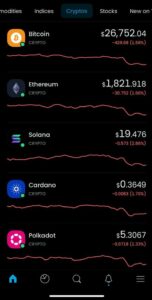
Assessing Plus500: Is It Worthwhile?
Evaluating Plus500’s worth involves considering its comprehensive offering and the unique value it brings to traders. The platform’s broad selection of tradable CFD instruments across various markets allows traders to diversify their portfolios from a single interface. Plus500’s competitive spreads, no commission on trades, and the leverage options make it an attractive choice for traders looking to maximize their trading potential.
However, the platform’s focus on CFD trading means it’s best suited for those with a good understanding of the risks involved with leveraged trading. Plus500’s educational resources are somewhat limited compared to competitors, which is a point of consideration for beginners. Nevertheless, the platform’s user friendly nature, robust regulatory framework, and comprehensive market access render it a worthwhile option for traders prioritizing a straightforward trading experience with a reliable broker.
In conclusion, choosing between Plus500 and Trading 212 depends on individual trading preferences, experience levels, and investment goals. Plus500 offers a wide array of CFD instruments with a focus on simplicity and security, making it ideal for traders who value a straightforward, efficient trading experience. On the other hand, Trading 212 appeals to those seeking a commission-free trading platform with a strong emphasis on stock and ETF trading, coupled with an intuitive and educational user experience. Both platforms stand as reputable and trustworthy choices in the online trading sphere, each with its strengths catering to different segments of the investor community.
Evaluating Trading 212: Is It Recommended?
Trading 212 has carved out a significant niche in the crowded online brokerage space by offering a user-friendly platform that caters to both novice and experienced traders. Its zero-commission model on stocks and ETFs, combined with a comprehensive array of financial instruments including forex, commodities, and indices, makes it an attractive option for a diverse range of investors. The platform also distinguishes itself with a strong emphasis on educational resources, offering a wealth of tutorials, videos, and articles to support users in their trading journey.
One of Trading 212’s standout features is its practice account, which allows users to experiment with trading strategies and get accustomed to the platform without risking real money. This feature, along with its intuitive mobile app and desktop interface, positions Trading 212 as a recommended choice for individuals looking to explore trading without the burden of high fees or complex platform navigation.
Minimum Deposit Requirement: Plus500’s Policy
Plus500 caters to traders of various levels by maintaining a relatively low minimum deposit requirement, making it accessible to beginners without significant capital. The minimum deposit amount varies by payment method and region but is generally set at a level that is competitive within the industry. This policy is part of Plus500’s strategy to make trading accessible to a broader audience while ensuring that clients have enough capital to cover the margins required for their trading activities.
Minimum Deposit Requirement: Trading 212’s Criteria
Trading 212 stands out for its accessibility, primarily due to its no minimum deposit policy for certain accounts, which allows investors to start trading with whatever amount they feel comfortable with. This approach is particularly appealing to novice traders and those looking to experiment with small amounts. By removing a significant barrier to entry, Trading 212 encourages wider participation in the financial markets.
Funding Options: Plus500 vs Trading 212
When it comes to funding options, both Plus500 and Trading 212 offer a variety of methods to accommodate their users. Plus500 allows deposits through credit and debit cards, bank transfers, and e-wallets such as PayPal and Skrill, catering to the needs of global traders. Withdrawal methods are similarly diverse, ensuring users can access their funds with ease.
Trading 212 also supports a broad range of funding options, including bank transfers, credit and debit cards, and several e-wallets. Its platform is designed to process deposits and withdrawals efficiently, providing users with a seamless transaction experience. Both platforms typically do not charge fees for deposits or withdrawals, although third-party fees may apply depending on the method used.
Comparing Pricing: Plus500 vs Trading 212
Pricing is a critical factor for many traders, and here, Plus500 and Trading 212 take different approaches. Plus500’s pricing is primarily spread-based, with no commissions on trades. Traders should be aware of overnight fees, currency conversion fees, and inactivity fees that may apply under certain conditions.
Trading 212, on the other hand, offers commission-free trading for stocks and ETFs, making it an attractive option for investors focusing on these markets. It does, however, charge spreads on forex, commodities, and other instruments. While Trading 212 does not charge deposit or withdrawal fees, inactive accounts might incur a fee after a certain period.
In summary, both Plus500 and Trading 212 provide competitive and distinct offerings tailored to different types of traders. Plus500 is a strong candidate for those interested in CFD trading across a wide range of instruments, while Trading 212 is particularly appealing for stock and ETF investors looking for a commission-free experience. The choice between the two will depend on individual trading preferences, the desired investment instruments, and the importance of educational resources and trading tools.
Safety Comparison: Plus500 vs Trading 212 for Forex and CFDs Trading
Safety and reliability are paramount considerations when trading Forex and CFDs due to the inherent risks associated with these markets. Both Plus500 and Trading 212 have established themselves as trustworthy platforms, but they achieve this through different means.
Plus500 operates under stringent regulatory oversight from multiple reputable bodies worldwide, including the FCA, CySEC, and ASIC. This regulatory framework ensures that Plus500 adheres to high standards of client fund protection, including segregated accounts and participation in financial services compensation schemes. Plus500’s platform security features, like SSL encryption and two-factor authentication, further safeguard traders’ information and funds.
Trading 212 is also regulated by the FCA, along with being registered with the Bulgarian Financial Supervision Commission, providing a robust regulatory environment. Trading 212 emphasizes transparency and client security, offering protection schemes and employing state-of-the-art security measures to protect user data and funds. Like Plus500, Trading 212 provides additional peace of mind through account segregation and encryption protocols.
Both platforms exhibit a strong commitment to safety, but the choice between them may come down to personal preference for a platform’s specific regulatory body or the additional protections offered.
Choosing Between Plus500 and Trading 212: Which Platform Reigns Supreme?
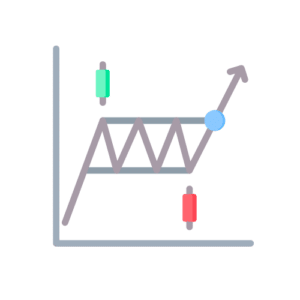
Deciding between Plus500 and Trading 212 ultimately hinges on the trader’s priorities, including the types of instruments they wish to trade, the trading environment they prefer, and the importance of pricing and fees.
Plus500 is particularly suited for traders interested in a wide range of CFD trading options, offering an extensive portfolio of instruments with competitive spreads. Its user-friendly platform caters to those seeking a straightforward trading experience without the need for external trading tools or platforms.
Trading 212, on the other hand, appeals to traders looking for commission-free stock and ETF trading, along with a strong selection of Forex pairs. Its offering of a demo account and a wealth of educational resources makes it an attractive option for beginners and those looking to refine their trading strategies without risk.
The decision between Plus500 and Trading 212 will depend on whether the trader values Plus500’s broad CFD selection and straightforward platform or Trading 212’s commission-free stock trading and educational resources.
Exploring MetaTrader and Copy Trading: Plus500 vs Trading 212
When it comes to advanced trading tools like MetaTrader and copy trading features, Plus500 and Trading 212 offer distinct experiences.
Plus500 does not support MetaTrader platforms or offer copy trading services. Instead, it focuses on providing a proprietary, intuitive platform designed to meet the needs of traders looking for a straightforward trading experience with all the necessary tools integrated into a single interface.
Trading 212 also does not offer MetaTrader integration but distinguishes itself with a feature called “AutoInvest & Pies,” which allows traders to create and share investment strategies, somewhat akin to copy trading. This feature enables users to automate their investments based on specific themes or strategies and is particularly appealing for those looking to diversify their portfolios passively.
Traders seeking the advanced functionalities of MetaTrader or dedicated copy trading platforms might need to look beyond Plus500 and Trading 212. However, for those satisfied with proprietary platforms and innovative investment features, Trading 212 offers a unique proposition.
Available Trading Options: Plus500 vs Trading 212
Plus500 offers an extensive range of CFDs across various asset classes, including stocks, forex, commodities, indices, ETFs, and options. This wide selection caters to traders looking to diversify their portfolios through CFD trading. Plus500’s platform is designed for efficiency and ease of use, making it suitable for both new and experienced traders.
Trading 212, while offering a significant selection of CFDs, stands out for its commission-free stock and ETF trading, making it an attractive platform for equity investors. In addition to CFDs on forex, commodities, and indices, Trading 212 provides direct access to the stock market, which is a significant advantage for those looking to invest in stocks and ETFs alongside CFD trading.
In summary, Plus500 is a strong contender for traders focused on CFD trading across a broad range of instruments, while Trading 212 offers a compelling option for those interested in combining stock and ETF investments with their CFD trading activities. The choice between Plus500 and Trading 212 should be guided by the trader’s specific investment goals, preferred instruments, and the value they place on educational resources and trading tools.
Forex Broker Summary - Trading 212 vs Plus500

In concluding our comprehensive comparison between Plus500 and Trading 212, it’s essential to recognize the distinct features and offerings each platform provides to cater to the diverse needs of the trading community. For individuals looking for a platform that supports retail investor accounts with a wide array of financial instruments, both platforms present compelling options. However, when it comes to trading basics, those new to the trading arena might lean towards Trading 212 for its extensive educational materials and investment platform designed to simplify complex trading concepts.
Mutual funds enthusiasts would need to look beyond these platforms, as both primarily focus on CFDs, forex, and stock trading. Forex traders seeking a broad range of currency pairs will find both platforms adequately equipped, though the specifics of offerings like leverage and spreads might vary, influencing their choice.
For those prioritizing negative balance protection, Plus500 and Trading 212 offer features aimed at safeguarding traders from losing more money than they have deposited, a crucial consideration for trading with high risk. While Plus500 establishes itself as a robust platform with a proprietary platform designed for straightforward trading experiences, Trading 212 offers a commission-free trading model that appeals to traders looking to maximize their investments without the burden of transaction costs.
Furthermore, the absence of a publicly listed company status for Trading 212 might sway some investors towards Plus500, which benefits from the transparency and regulatory scrutiny associated with being listed on the London Stock Exchange. Nonetheless, the importance of choosing a platform extends beyond such factors, including considerations around the trading academy, support team, and the presence of user-friendly platforms, all of which play a significant role in a trader’s success and satisfaction.
In summary, both Plus500 and Trading 212 offer robust platforms that cater to different aspects of the trading spectrum. Whether your focus is on engaging with a wide range of financial instruments, leveraging advanced trading tools, or you’re a newcomer starting your trading journey, the choice between Plus500 vs Trading 212 should be informed by your specific trading needs, investment goals, and the kind of support you expect from your chosen platform. Each platform has carved out its niche in the market, emphasizing the importance of user-friendly features, educational resources, and the safety of retail investor accounts, ensuring that traders of all levels have access to the tools and information they need to make informed trading decisions.
References
FAQs
Forex trading involves the exchange of one currency for another on a decentralized global market. It’s one of the largest and most liquid financial markets where currencies are traded in pairs, such as EUR/USD or GBP/USD. Both Plus500 and Trading 212 offer forex trading, providing traders with the opportunity to speculate on currency price movements through CFDs (Contracts for Difference), leveraging detailed market analysis tools to make informed decisions.
Retail CFD accounts are designed for individual traders who wish to trade CFDs, offering access to various financial instruments like stocks, commodities, and forex. Trading platforms like Plus500 and Trading 212 provide these accounts with features tailored to retail investors, including user-friendly interfaces, educational resources, and risk management tools like stop-loss orders. It’s important to note that CFDs are complex instruments and come with a high risk of losing money rapidly due to leverage.
Choosing the right trading platform depends on your specific trading goals, preferred financial instruments, and desired platform features. Consider factors such as the range of available markets (e.g., stocks, forex, commodities), trading fees, platform usability, educational resources, and regulatory compliance. Plus500 and Trading 212 both offer comprehensive trading platforms but differ in their fee structures, minimum deposit requirements, and available trading options, including commission-free trading on Trading 212.
Yes, both Plus500 and Trading 212 provide demo accounts that allow beginners to practice trading without risking real money. These accounts are loaded with virtual funds, offering a risk-free environment to familiarize yourself with the trading platform, test trading strategies, and learn the basics of forex and CFD trading. Demo accounts are an excellent way for new traders to gain experience and build confidence before transitioning to a live trading account.
While Plus500 and Trading 212 primarily focus on manual trading through their proprietary platforms, traders looking for automated trading options might need to explore additional tools or platforms that specialize in automated or algorithmic trading strategies. Automated trading involves using software to execute trades based on predefined criteria, which can help in executing a disciplined trading strategy, managing risk, and taking advantage of market opportunities 24/7 without constant manual oversight.

